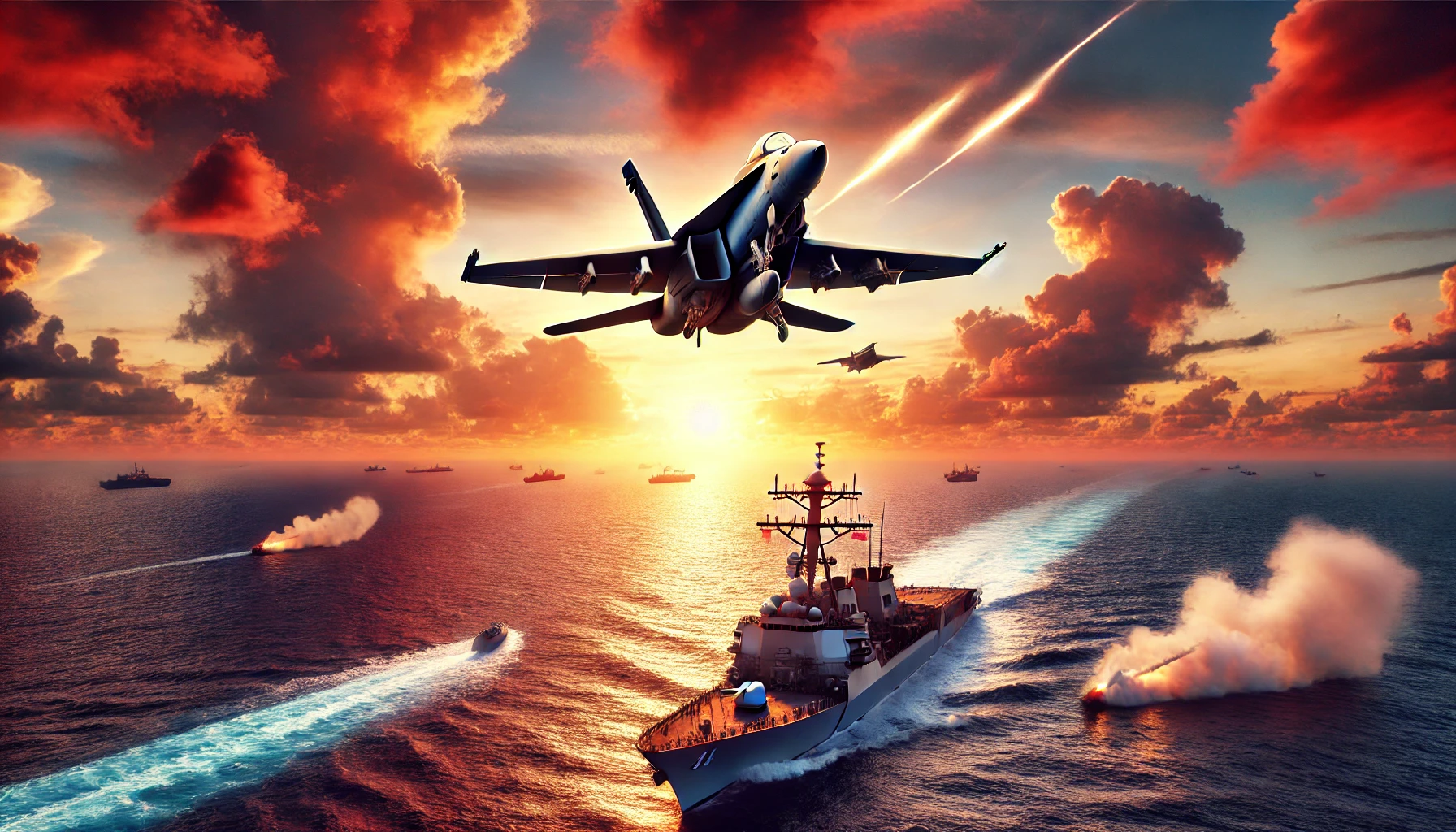US Fighter Jet Shot Down Over Red Sea in “Friendly Fire” Incident
In a rare and unfortunate occurrence, an American F/A-18 Hornet fighter jet was downed over the Red Sea in what the US military described as a “friendly fire” incident. According to US Central Command (CENTCOM), both crew members safely ejected, with one sustaining minor injuries.
This incident follows a series of escalated military operations in the region, as tensions with Iran-backed Houthi militants continue to rise. The US recently conducted targeted airstrikes on missile storage facilities and command centers operated by the Houthis in Yemen’s capital, Sanaa.
Details of the US Fighter Jet Friendly Fire Incident
The mishap occurred when the guided-missile cruiser USS Gettysburg, part of the USS Harry S. Truman Carrier Strike Group, mistakenly fired on the F/A-18. The aircraft, flying off the USS Harry S. Truman, was hit while operating over the Red Sea.
In a statement, CENTCOM acknowledged the mistake, confirming it as a friendly fire incident but did not specify if the downed jet was part of the ongoing operations against Houthi targets in Yemen.
US Strikes on Houthi Targets
The incident comes amid heightened military activity in the region. The US carried out significant airstrikes targeting Houthi assets in Yemen, aiming to neutralize threats posed by their growing arsenal of drones, missiles, and other advanced weaponry.
CENTCOM stated that these strikes were intended to “disrupt and degrade Houthi operations,” particularly those targeting international shipping routes in the Red Sea, Bab al-Mandeb Strait, and Gulf of Aden. The US military used a combination of air assets, including F/A-18 jets, to strike Houthi one-way attack drones and an anti-ship cruise missile over the Red Sea.
Who Are the Houthis and Their Objectives?
The Houthis are an Iran-backed rebel faction controlling northwestern Yemen, including the capital, Sanaa. Initially focused on Yemen’s internal conflict, the group expanded its operations, targeting international shipping and military assets.
The Houthis’ recent actions stem from their proclaimed solidarity with Palestinians amid the Gaza conflict. Since October 2023, the group has launched missile and drone attacks against international shipping, particularly vessels linked to Israel, the US, and the UK.
Red Sea Attacks and Global Response
The Houthis have been responsible for sinking two vessels and damaging others in the Red Sea since November 2023. While the group claims to target only ships associated with Israel and its allies, many of these assertions have been found to be inaccurate.
In response, the US, UK, and 12 other nations launched Operation Prosperity Guardian to safeguard vital shipping lanes in the Red Sea against Houthi aggression. The operation underscores the strategic importance of this maritime route, a lifeline for global trade.
Houthi Missile Strikes in Israel
Houthi aggression recently extended beyond maritime targets. On Saturday, a Houthi-launched hypersonic ballistic missile struck a park in Tel Aviv, Israel. The attack left 16 people injured by shattered glass from nearby buildings, while 14 others suffered minor injuries while seeking shelter.
Israel’s attempts to intercept the missile failed, prompting swift retaliation. Israeli forces launched airstrikes on Houthi military targets, including ports and energy infrastructure in Yemen. Reports indicate that nine individuals were killed in these strikes on the Salif port and Ras Issa oil terminal.
A Continuing Cycle of Retaliation
The Houthis have vowed to persist with their attacks until the conflict in Gaza concludes. Meanwhile, the US has reaffirmed its commitment to protecting its assets and allies in the region.
As tensions rise, the US military’s latest actions serve as a stern warning to the Houthis and their backers. However, incidents like the downing of the F/A-18 Hornet underscore the complexities and dangers of operating in such a volatile region.
Conclusion
The Red Sea remains a critical geopolitical hotspot, with escalating hostilities posing significant risks to regional stability and global trade. The US and its allies face the dual challenge of deterring Houthi aggression while avoiding incidents like the recent friendly fire mishap.
As the situation develops, maintaining secure shipping lanes and safeguarding international interests will require continued vigilance and strategic coordination among allied nations.



